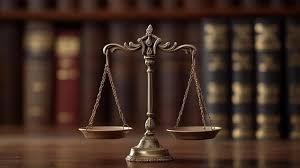
Forensic evidence has long been a cornerstone of the criminal justice system, often seen as the objective truth amid competing narratives in a courtroom. Whether it’s DNA, fingerprints, ballistics, or digital footprints, forensic evidence carries a unique authority that can powerfully influence a jury’s perception of guilt or innocence.
However, the persuasive impact of forensic evidence on jury decisions is a double-edged sword. While it can clarify facts and support justice, it can also mislead when misunderstood, misrepresented, or overvalued. This article explores the psychological, legal, and scientific dimensions of how forensic evidence affects jury deliberations and outcomes.
The Persuasive Power of Forensic Evidence
1. Perceived Objectivity and Authority
Jurors, most of whom are laypeople with little scientific training, tend to view forensic evidence as highly reliable and unbiased. The involvement of experts and the use of technology lend an air of infallibility. This “science halo effect” can give forensic evidence disproportionate weight compared to eyewitness testimony or circumstantial evidence.
2. Visual and Technical Impact
Modern forensic presentations often include:
Digital reconstructions of crime scenes
Graphs and statistics showing probabilities or matches
Expert testimony from forensic scientists
Such displays enhance jurors’ engagement and comprehension but may also overwhelm or unduly impress them, especially if not balanced with critical context.
The CSI Effect: Fiction Meets Reality
Television shows like CSI, NCIS, and Bones have popularized forensic science but often misrepresent its capabilities. This has led to the so-called “CSI Effect,” where jurors:
Expect definitive forensic evidence in every case
Are skeptical of the prosecution if forensic evidence is lacking
Overestimate the accuracy and conclusiveness of forensic methods
This cultural phenomenon has impacted both prosecution and defense strategies, as attorneys must now contend with inflated jury expectations.
Not All Forensics Are Equal
While DNA analysis is widely regarded as the “gold standard” due to its high accuracy and scientific rigor, many other forms of forensic evidence have been challenged for their subjectivity and lack of standardization:
Bite mark analysis: Often lacks reproducibility; discredited in many cases.
Hair microscopy: Supplanted by DNA due to high error rates.
Fingerprint analysis: More reliable, but still prone to human bias.
Tool mark and ballistic comparisons: Subject to interpretation.
Yet jurors may not differentiate between well-founded and questionable forensic methods, giving all types of forensic evidence similar weight.
Psychological Mechanisms Behind Jury Influence
1. Confirmation Bias
Jurors may unconsciously interpret forensic evidence in a way that supports their initial impressions of a defendant’s guilt or innocence, especially if the evidence is ambiguous.
2. Anchoring Effect
Forensic evidence introduced early in a trial can anchor a juror’s belief, shaping how they interpret subsequent testimony.
3. Expert Witness Credibility
The demeanor, credentials, and communication style of a forensic expert can significantly impact juror trust. A confident, articulate expert may be more persuasive, even if their science is less robust.
Risks of Miscarriage of Justice
There have been numerous cases where faulty or misapplied forensic evidence led to wrongful convictions:
Cameron Todd Willingham was executed in Texas based on flawed arson analysis.
Brandon Mayfield was wrongly implicated in the 2004 Madrid bombings due to a misidentified fingerprint.
The FBI hair comparison scandal revealed widespread overstated forensic claims affecting thousands of cases.
These cases highlight the need for greater scrutiny of forensic evidence and better education for jurors.
Legal Safeguards and Reforms
1. Daubert Standard and Frye Test
Courts use legal standards like Daubert v. Merrell Dow Pharmaceuticals and the Frye test to determine whether forensic evidence is scientifically valid and admissible. Judges serve as gatekeepers, though many still admit questionable forensic methods.
2. Jury Instructions and Expert Cross-Examination
Attorneys and judges can mitigate forensic overreach by:
Challenging the qualifications and conclusions of forensic experts
Providing jury instructions that caution against overreliance on certain types of evidence
Using rebuttal experts to clarify limitations
3. Calls for National Standards
The National Academy of Sciences (2009) and the President’s Council of Advisors on Science and Technology (PCAST) have called for:
Improved standardization and oversight of forensic disciplines
Independent accreditation of labs and practitioners
Evidence-based validation of forensic methods
Conclusion: A Tool, Not a Verdict
Forensic evidence can illuminate the truth—but only when properly understood, applied, and weighed against the broader context of a case. Its influence on juries is profound and growing, but with that influence comes responsibility.
Attorneys, judges, and policymakers must ensure that forensic science is used not as a decisive hammer, but as one tool among many in the search for justice. And jurors, the ultimate arbiters of fact, must be given the tools and education to critically evaluate the evidence before them.
Recent Posts
- Collaborating Experts: When Forensic Engineers and Attorneys Work Together
- Product Failure Analysis: When Consumer Devices Become Courtroom Evidence
- Forensic Electrical & Fire Investigation Collaboration: When Multidisciplinary Expertise Saves the Case
- Biomechanical Injury Analysis: How Science Proves or Disputes Injury Claims
- How Structural Engineers Help Uncover the Cause of Building Failures

Leave a Reply